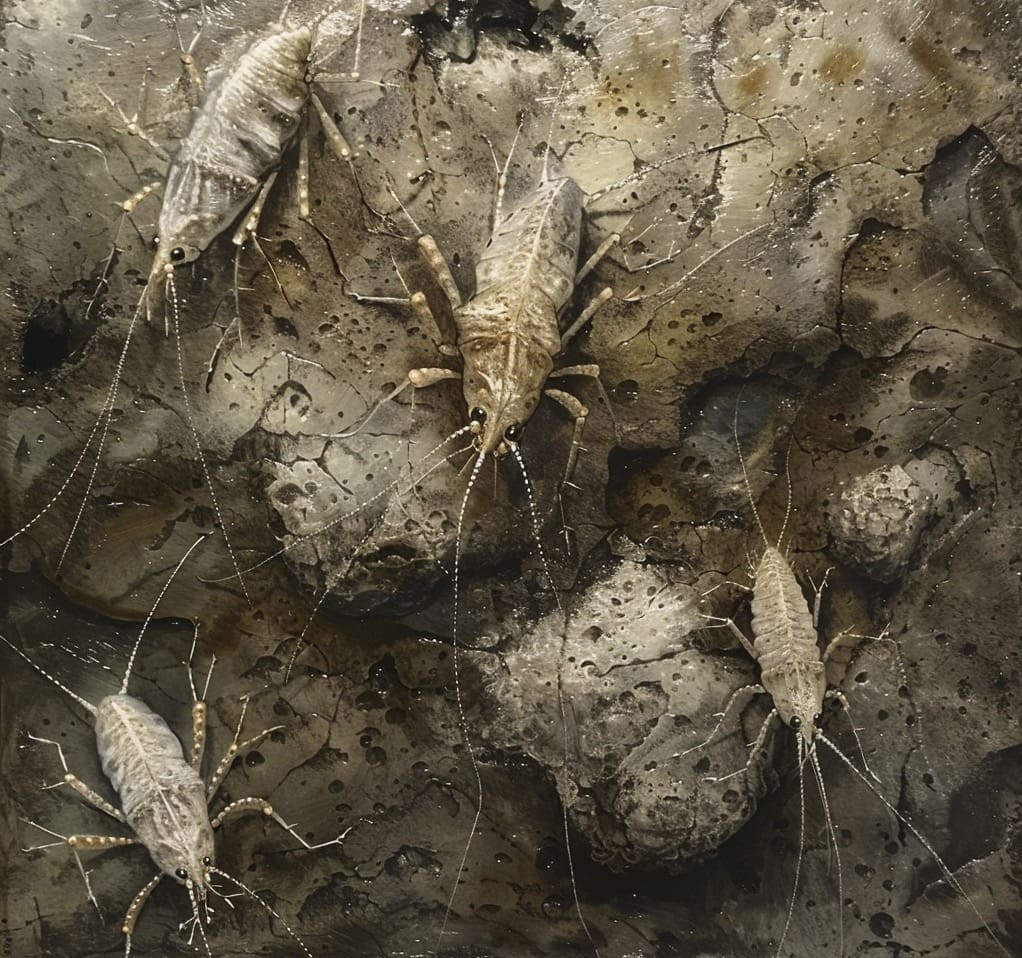
Silverfish infestations can be more than just a nuisance in our homes. These small, silvery-blue insects are often overlooked, but they might pose potential health risks that we shouldn't ignore. While they're not known to bite or transmit diseases directly, their presence can still impact our well-being in surprising ways.
We'll explore the hidden dangers of silverfish infestations and why it's crucial to address them promptly. From allergic reactions to contamination of food and household items, these seemingly harmless creatures can cause more trouble than you might think. Let's dive into the potential health risks associated with silverfish and learn how to protect ourselves and our loved ones from these sneaky household pests.
What Are Silverfish?
Silverfish are small, wingless insects belonging to the order Zygentoma. These nocturnal creatures get their name from their silvery-gray color and fish-like movements. Typically measuring between 0.5 to 1 inch in length, silverfish have elongated bodies with three long bristles at the rear end.
Physical Characteristics
- Flat, teardrop-shaped bodies
- Metallic, silvery-blue scales covering their exoskeletons
- Six legs and two long antennae
- Three bristle-like appendages protruding from their posterior
Habitat and Behavior
Silverfish thrive in dark, damp environments with high humidity levels. Common hiding spots include:
- Basements
- Attics
- Bathrooms
- Kitchens
- Bookshelves
These insects are attracted to starchy materials and feed on a variety of household items, including:
- Paper products (books, wallpaper, cardboard)
- Glue and adhesives
- Clothing fibers (cotton, linen, silk)
- Food debris and crumbs
Silverfish are nocturnal and prefer to stay hidden during the day, making infestations difficult to detect in their early stages. They're capable of surviving long periods without food, which contributes to their persistence in homes.
Understanding Silverfish Infestations
Silverfish infestations often go unnoticed until they become severe. These elusive pests can multiply rapidly, causing extensive damage to personal belongings and potentially affecting indoor air quality. Recognizing the signs of an infestation and identifying common areas where silverfish thrive is crucial for effective prevention and control.
Signs of Infestation
Identifying a silverfish infestation early is key to preventing extensive damage. Look for these telltale signs:
- Yellow stains on clothing, papers, or cardboard
- Small, pepper-like feces in drawers, on bookshelves, or in dark corners
- Holes or chew marks on wallpaper, books, or fabric
- Shed scales or molted skins in secluded areas
- Live silverfish scurrying away when disturbed
Regular inspection of storage areas, bookcases, and closets helps detect these signs early, enabling prompt action against infestations.
Common Areas of Infestation
Silverfish prefer dark, humid environments with access to their preferred food sources. They're commonly found in:
- Bathrooms: Near sinks, toilets, and bathtubs
- Kitchens: Under appliances, in pantries, and cupboards
- Basements: Especially in damp, poorly ventilated areas
- Attics: Where they feed on book bindings and cardboard boxes
- Laundry rooms: Around washing machines and dryers
- Libraries: Feeding on books, newspapers, and magazines
- Closets: Infesting clothing, especially items made of natural fibers
Identifying these hotspots allows for targeted prevention and treatment strategies, reducing the risk of widespread infestations and associated health concerns.
Potential Health Risks of Silverfish
While silverfish don't directly bite humans or transmit diseases, their presence can lead to various health concerns. These risks range from allergic reactions to psychological distress, affecting the well-being of individuals living in infested environments.
Allergies and Asthma Triggers
Silverfish contribute to indoor air pollution by shedding scales and leaving droppings. These particles become airborne, triggering allergic reactions in sensitive individuals. Common symptoms include sneezing, runny nose, and itchy eyes. For asthma sufferers, silverfish allergens can exacerbate breathing difficulties, leading to more frequent or severe asthma attacks. Regular cleaning and proper pest control help minimize these allergens and improve indoor air quality.
Psychological Impact
The presence of silverfish can cause significant psychological distress. Seeing these insects scurrying across floors or walls often leads to feelings of disgust and anxiety. In severe cases, individuals may develop entomophobia, an irrational fear of insects. This fear can disrupt daily activities and sleep patterns, affecting overall mental well-being. Professional pest control and maintaining a clean environment help alleviate these psychological burdens associated with silverfish infestations.
Silverfish and Disease Transmission
While silverfish don't directly transmit diseases to humans, they can indirectly contribute to health risks. These pests contaminate food and surfaces with their droppings and shed scales, potentially introducing harmful bacteria. Silverfish also attract other pests like spiders and centipedes, which may pose additional health concerns. Proper food storage and regular cleaning help minimize the risk of contamination and prevent secondary pest infestations associated with silverfish presence.
Property Damage Caused by Silverfish
Silverfish infestations pose significant threats to household items and structures. These pests' feeding habits and moisture-seeking behavior lead to various forms of property damage, often resulting in costly repairs and replacements.
Types of Materials at Risk
Silverfish target a wide range of materials found in homes and buildings:
- Paper products: Books, magazines, newspapers, and important documents
- Fabrics: Clothing, curtains, upholstery, and carpets
- Adhesives: Wallpaper glue, book bindings, and photo albums
- Starches: Cereals, flour, and other pantry items
- Cellulose-based materials: Cardboard boxes and wooden furniture
- Insulation: Fiberglass and foam insulation in walls and attics
These pests' preference for carbohydrates and proteins puts many household items at risk of damage or destruction.
Long-Term Consequences of Infestation
Unchecked silverfish infestations lead to severe and lasting property damage:
- Structural weakening: Continuous feeding on wooden structures compromises their integrity
- Irreplaceable losses: Damage to family heirlooms, important documents, and rare books
- Increased repair costs: Extensive damage requires professional restoration or replacement
- Decreased property value: Visible damage and lingering infestations lower real estate value
- Secondary pest problems: Silverfish attract other pests, compounding property damage
- Moisture-related issues: Silverfish thrive in damp areas, indicating potential water damage
Early detection and prompt pest control measures are crucial to prevent these long-term consequences and protect property value.
Silverfish and Pet Safety
Silverfish infestations don't just affect humans; they can also impact our pets' well-being. While these pests aren't directly harmful to cats and dogs, their presence can lead to several indirect risks:
Allergic Reactions in Pets
Pets, like humans, can develop allergies to silverfish:
- Skin irritation: Exposure to silverfish allergens may cause itching and rashes
- Respiratory issues: Pets might experience coughing, sneezing, or wheezing
- Digestive problems: Ingesting silverfish can lead to stomach upset in some animals
Behavioral Changes
Silverfish infestations can alter pet behavior:
- Increased anxiety: Pets may become restless or agitated due to pest activity
- Disrupted sleep patterns: Nocturnal silverfish movement can disturb pets' rest
- Excessive scratching or grooming: Pets might react to silverfish allergens on their skin
Secondary Health Risks
Indirect health concerns for pets include:
- Accidental ingestion: Pets might consume silverfish or contaminated food
- Exposure to pesticides: Some pest control methods can be harmful to animals
- Attraction of predators: Silverfish can draw in spiders or centipedes, posing additional risks
Protecting Your Pets
To safeguard pets from silverfish-related issues:
- Regular cleaning: Vacuum and dust frequently to reduce allergen buildup
- Pet-safe pest control: Use pet-friendly methods to manage silverfish infestations
- Veterinary check-ups: Monitor pets for signs of allergies or unusual behavior
- Secure food storage: Keep pet food in airtight containers to prevent contamination
By addressing silverfish infestations promptly and safely, we can minimize potential health risks to both humans and pets in our homes.
Preventing Silverfish Infestations
Preventing silverfish infestations is crucial to avoid potential health risks and property damage. We'll explore effective strategies to keep these pests at bay, focusing on environmental control methods and natural deterrents.
Environmental Control Methods
Environmental control methods are essential for preventing silverfish infestations:
- Reduce humidity: Use dehumidifiers in damp areas like basements and bathrooms.
- Fix leaks: Repair any plumbing issues promptly to eliminate moisture sources.
- Improve ventilation: Install exhaust fans in bathrooms and kitchens to reduce humidity.
- Seal entry points: Caulk cracks and crevices in walls, floors, and foundations.
- Declutter: Remove unnecessary paper, cardboard, and fabric items from storage areas.
- Use airtight containers: Store food, clothing, and important documents in sealed containers.
- Maintain cleanliness: Regular vacuuming and dusting reduce potential food sources for silverfish.
Natural Deterrents
Natural deterrents offer eco-friendly alternatives to chemical pesticides:
- Cedar: Place cedar blocks or shavings in closets and storage areas.
- Lavender: Use lavender sachets or essential oils to repel silverfish.
- Citrus: Spread orange or lemon peels in affected areas.
- Cinnamon: Sprinkle ground cinnamon in spots where silverfish are commonly seen.
- Bay leaves: Place whole bay leaves in bookshelves and drawers.
- Cloves: Scatter whole cloves in areas prone to silverfish activity.
- Diatomaceous earth: Apply food-grade diatomaceous earth along baseboards and entry points.
Implementing these environmental control methods and natural deterrents creates an inhospitable environment for silverfish, reducing the likelihood of infestations and associated health risks.
Effective Silverfish Removal Strategies
Removing silverfish effectively requires a combination of DIY methods and professional pest control options. We'll explore both approaches to help you tackle silverfish infestations and minimize associated health risks.
DIY Solutions
DIY silverfish removal methods are cost-effective and readily accessible. Diatomaceous earth, a natural powder, damages silverfish exoskeletons when they crawl over it. Sprinkle it in areas where silverfish are commonly seen. Sticky traps placed in corners and along baseboards capture silverfish as they move around. Essential oils like lavender, citrus, or eucalyptus repel silverfish when applied to affected areas. Boric acid, a low-toxicity insecticide, kills silverfish when ingested. Apply it sparingly in hard-to-reach areas, away from pets and children.
Professional Pest Control Options
Professional pest control services offer targeted and comprehensive silverfish elimination. Trained technicians assess the infestation's extent and apply specialized treatments. Chemical insecticides, such as pyrethrins or pyrethroids, effectively eliminate silverfish populations. Fumigation techniques reach hidden silverfish in wall voids and other inaccessible areas. Ongoing monitoring and follow-up treatments ensure long-term silverfish control. Professional services also provide expert advice on preventing future infestations, addressing moisture issues, and sealing entry points to maintain a silverfish-free environment.
Romex Pest Control Silverfish Elimination
At Romex Pest Control, we offer comprehensive silverfish elimination services to protect your home and health. Our expert technicians use advanced techniques and environmentally friendly products to eradicate silverfish infestations effectively.
Inspection and Assessment
We begin with a thorough inspection of your property, identifying silverfish hiding spots and entry points. Our team assesses the extent of the infestation, considering factors like moisture levels and potential food sources.
Customized Treatment Plan
Based on the inspection results, we develop a tailored treatment plan for your specific situation. This plan may include:
- Targeted application of low-toxicity insecticides
- Installation of baits and traps in strategic locations
- Moisture control measures to reduce favorable conditions
- Sealing of entry points to prevent future infestations
Safe and Effective Elimination
Our treatments use EPA-approved products that are safe for humans and pets when applied correctly. We employ integrated pest management techniques to minimize chemical use while maximizing effectiveness.
Follow-up and Prevention
After the initial treatment, we conduct follow-up inspections to ensure complete elimination. We provide recommendations for ongoing prevention, including:
- Proper storage of food items
- Reducing humidity levels in problem areas
- Regular cleaning and decluttering practices
Customer Education
We believe in empowering our clients with knowledge. Our technicians educate you on silverfish behavior, habitat preferences, and preventive measures to maintain a silverfish-free environment long-term.
By choosing Romex Pest Control for silverfish elimination, you're not just addressing a current infestation but investing in the long-term health and safety of your home and family.
In Summary
Silverfish infestations pose various health risks and can cause significant property damage. While there are DIY methods available, professional pest control services offer the most comprehensive and effective solutions. We at Romex Pest Control are committed to providing top-notch silverfish elimination services tailored to your specific needs. Our expert team ensures not only the eradication of current infestations but also implements preventive measures for long-term protection. Don't let silverfish compromise your home's safety and your family's well-being. Take action today and reclaim your peace of mind with our professional pest control services.
We hope you enjoy these informational articles. If you'd like to learn more about our eco-friendly pest control services, call (844) 955-2447.
Read More
Your Path to a Pest-Free Home or Business
Romex Pest Control is dedicated to keeping you, your children, and your pets safe. We offer an eco-friendly, child-friendly, and pet-friendly pest control solution that is guaranteed.
We are confident in solving all pest, rodent, and termite problems.
Romex Pest Control is fully insured and licensed in Texas, Oklahoma, Louisiana, and Mississippi.
Hours
M-F 8 am–5 pm
Sat 8 am–2 pm
Sun Closed
Established 2016 © Copyright 2025 Romex Pest Control










